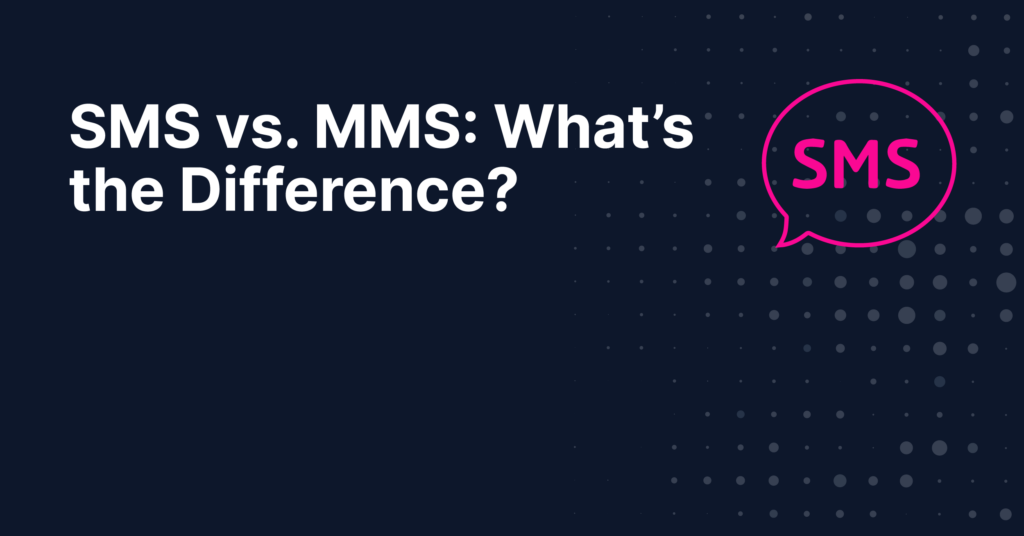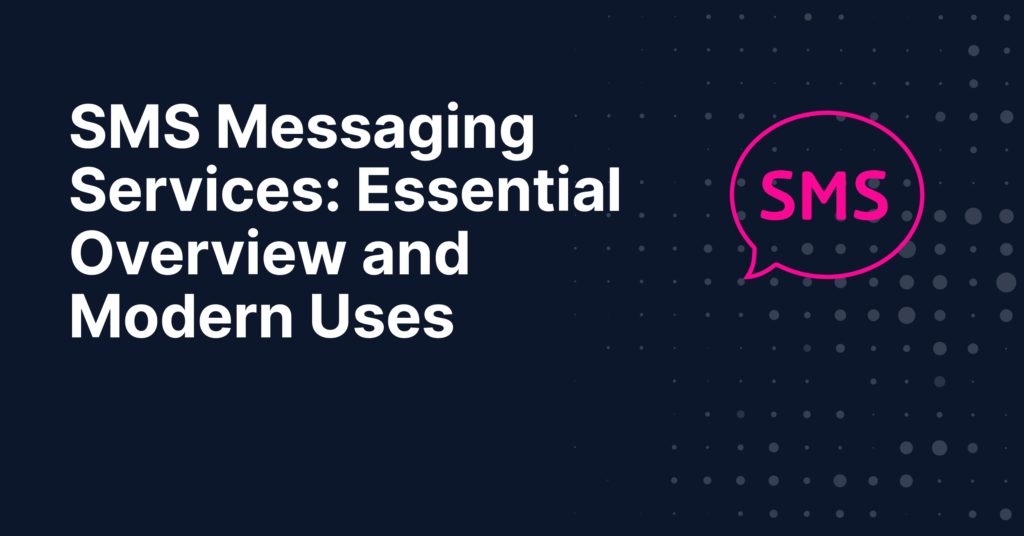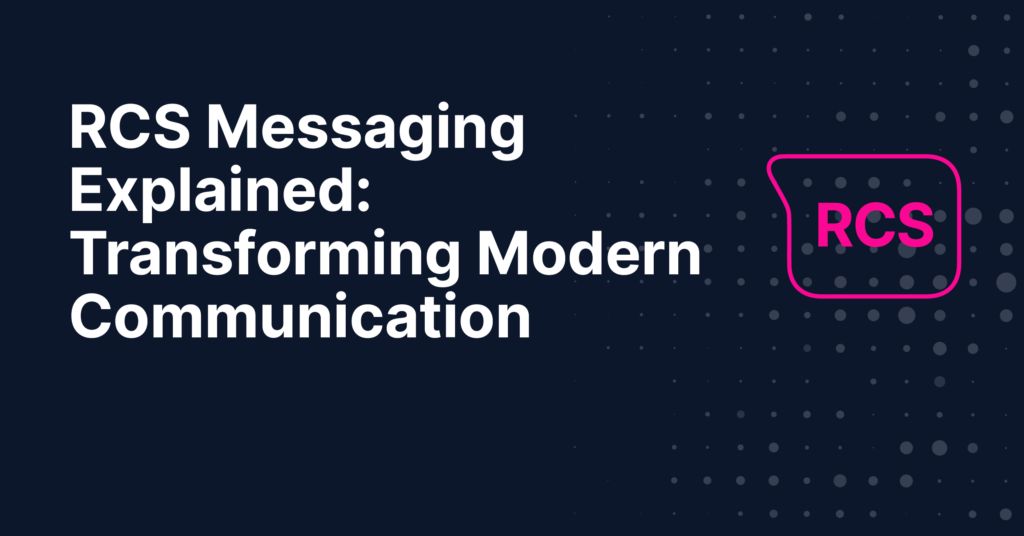What is SMS and MMS? In our ever-evolving communication landscape, it’s crucial to understand these two key messaging services. SMS (Short Message Service) and MMS (Multimedia Messaging Service) may appear similar, but they have distinct functions and purposes.
This article clarifies their differences, features, and roles in modern communication, providing valuable insights for both business professionals and everyday users. Dive in to discover how SMS and MMS fit into your communication toolkit and determine which service best suits your needs.
1. Understanding SMS (Short Message Service)
-
Definition and basic concept of SMS
SMS (Short Message Service) is a key mobile telecom technology for sending and receiving text messages. Originating from the GSM standards, it allows sending messages up to 160 characters, a limit based on the efficient use of network bandwidth.
SMS’s text-only format is ideal for simple, direct messages. Its widespread compatibility across all mobile phones and reliance on cellular networks, not the Internet, makes SMS highly reliable and accessible, even in areas without Internet. Known for its simplicity, SMS is a global communication staple for quick, clear information sharing.
2. Exploring MMS (Multimedia Messaging Service)
-
Exploring MMS (Multimedia Messaging Service)
MMS (Multimedia Messaging Service) expands upon traditional SMS by allowing the inclusion of multimedia like images, audio, and video in messages, along with extended text.
This evolution from SMS enables more expressive and interactive communication, breaking the text-only and character limitations of SMS. While MMS uses the same mobile networks as SMS, it requires data connectivity for its larger content, which can be influenced by network speed and data availability.
With the rise of faster data services and Wi-Fi, MMS has become more accessible, enhancing both personal and business communications with its ability to send diverse media directly to phones. MMS represents a shift towards more dynamic and rich media interactions in today’s digital world.
-
Key features and capabilities of MMS
MMS, or Multimedia Messaging Service, enhances mobile communication by offering several advanced features:
-
- Multimedia Sharing: MMS allows sending images, audio, video clips, and more, enriching the messaging experience beyond the text-only format of SMS.
- Extended Text Length: Unlike the 160-character limit of SMS, MMS supports longer messages, enabling more detailed communication.
- Rich Text Formatting: MMS messages can include varied fonts, colors, and styles, making them visually engaging.
- Group Messaging: MMS supports sending multimedia messages to multiple recipients at once, ideal for broad communication.
- Data Integration: MMS uses mobile data or Wi-Fi for multimedia content, ensuring high-quality media transmission.
- Subject Lines: Like emails, MMS messages can have subject lines, providing a quick context overview.
These features make MMS a versatile and dynamic choice for modern communication needs.
3. Comparative Analysis: SMS vs. MMS
-
Detailed comparison of SMS and MMS
Understanding the differences between SMS (Short Message Service) and MMS (Multimedia Messaging Service) is crucial in choosing the right tool for your communication needs. Here’s a detailed comparison based on key aspects:
| Feature | SMS (Short Message Service) | MMS (Multimedia Messaging Service) |
| Content Types Supported | Text-only messages | Text, images, audio, video clips, rich text |
| Message Length and Size Limitations | Limited to 160 characters per message | Supports larger sizes for multimedia content; no strict character limit |
| Usage Scenarios and Applications | Ideal for alerts, reminders, concise information | Suited for marketing campaigns, sharing multimedia, detailed messages |
| Compatibility with Devices and Networks | Compatible with almost all mobile phones; uses cellular network | Requires data-capable devices; relies on data or Wi-Fi connectivity |
This table provides a clear, side-by-side comparison of the key features and differences between SMS and MMS.
4. Advantages of SMS
-
Highlighting the benefits and popular use-cases of SMS
-
-
Benefits and Popular Use-Cases of SMS
-
Short Message Service (SMS) offers several distinct advantages:
-
- Wide Accessibility: Compatible with nearly all mobile phones, SMS is universally accessible.
- Dependable Delivery: Operates independently of internet access, ensuring reliable message delivery even in areas with limited connectivity.
- Simplicity: No need for additional apps or software, making it straightforward for all users.
- Promptness: Messages are delivered swiftly, ideal for urgent communication.
- High Engagement: SMS typically sees higher open rates than emails, benefiting urgent alerts and marketing.
-
Key Use-Cases:
-
- Alerts and Notifications: Widely used for timely alerts, reminders, and notifications.
- Security Verification: Commonly employed for sending One-Time Passwords in two-factor authentication processes.
- Marketing Outreach: Effective for concise, direct marketing messages and promotions.
-
Scenarios Where SMS is the Preferred Communication Method
SMS is particularly favored in scenarios that require quick, straightforward communication. It is ideal in emergency situations for rapid alerts, in rural areas with limited internet access, and for reaching out to audiences who may not have access to advanced smartphones or internet-based messaging apps. Businesses also prefer SMS for reliable customer communication and for ensuring important messages are read promptly.
5. Advantages of MMS
-
Unique Benefits and Applications of MMS
Multimedia Messaging Service (MMS) extends the capabilities of standard text messaging, offering unique benefits:
-
- Rich Media Communication: MMS supports sending images, audio, and video, facilitating more engaging and informative messages.
- Enhanced Content Delivery: Ideal for delivering marketing materials, educational content, or personal multimedia messages.
- Creative Expression: Allows for creative messaging with the inclusion of multimedia elements, enhancing user engagement.
-
Situations Where MMS Offers an Advantage
MMS is particularly advantageous in scenarios where visual or audio elements are crucial:
-
- Marketing and Advertising: Enables businesses to send visually rich promotional content, capturing more attention than text-only SMS.
- Information Dissemination: Useful for educational or instructional content where visuals are necessary for better understanding.
- Personal Communication: Enhances personal messages with the ability to share memorable photos or videos.
In essence, MMS stands out in situations that demand more than just text, offering a richer, more expressive messaging experience.
6. Future Outlook
-
Future Developments in SMS and MMS
Looking ahead, SMS is expected to maintain its relevance due to its universality and reliability. Innovations may focus on integrating SMS with other technologies for more interactive experiences. MMS could evolve with advancements in mobile data networks, potentially leading to more sophisticated multimedia messaging capabilities, and enhancing user engagement in both personal and business communication spheres.
7. Conclusion
-
Summarizing Key Points and Final Thoughts
In conclusion, SMS and MMS remain integral components of the current communication landscape. SMS, with its simplicity and widespread accessibility, continues to serve essential functions like alerts and authentication. MMS, with its ability to convey richer, multimedia content, plays a significant role in more visually-driven communication contexts.
As we navigate an increasingly digital world, the relevance of both SMS and MMS is underscored by their adaptability and evolving functionalities. While they serve different purposes, together they form a comprehensive toolkit for effective and versatile communication. Their continued evolution will undoubtedly contribute to shaping the future of mobile messaging, ensuring that we remain connected in more ways than one.
8. FAQs
-
What is SMS and MMS?
SMS (Short Message Service) is a text messaging service that allows sending and receiving short text messages, typically up to 160 characters, on mobile phones. MMS (Multimedia Messaging Service), on the other hand, expands this capability to include multimedia content like images, audio, video clips, and longer text messages, enabling richer and more expressive communication. Both services are fundamental in mobile communication, with SMS known for its simplicity and reliability, and MMS for its enhanced media sharing capabilities.
-
Is WhatsApp an SMS or MMS?
WhatsApp is neither SMS nor MMS; it’s an internet-based messaging application. Unlike SMS and MMS, which are services provided by mobile network operators and use cellular networks for message delivery, WhatsApp requires an internet connection to send and receive messages, calls, photos, videos, and other multimedia content. It offers features similar to MMS and more, but operates over the internet rather than through traditional mobile network services.
-
Does SMS send pictures?
No, SMS (Short Message Service) does not support sending pictures. SMS is designed for sending text messages only, up to 160 characters. To send pictures or other multimedia content, the Multimedia Messaging Service (MMS) or other internet-based messaging applications like WhatsApp or email are used.
-
How does MMS work?
MMS (Multimedia Messaging Service) works by allowing the transmission of multimedia content – including images, audio, video, and text – over cellular networks. When you send an MMS, the content is first uploaded to the mobile operator’s server. The recipient then receives a notification with a link to download the content, usually via a mobile data or Wi-Fi connection. MMS requires a compatible phone and network service that supports these types of messages, and often a data plan is necessary to send and receive MMS messages without additional charges.
-
Should I use SMS or MMS?
Whether to use SMS or MMS depends on your communication needs. Use SMS for sending brief, text-only messages, especially when reliability and speed are crucial. It’s ideal for alerts, reminders, or simple updates, and works on all mobile phones. Choose MMS if you need to send multimedia content like images, audio, or video, or if your message requires more visual engagement. MMS is suitable for marketing campaigns, detailed information sharing, or enhancing personal messages. Consider the recipients’ device capabilities and network access when deciding between SMS and MMS.



